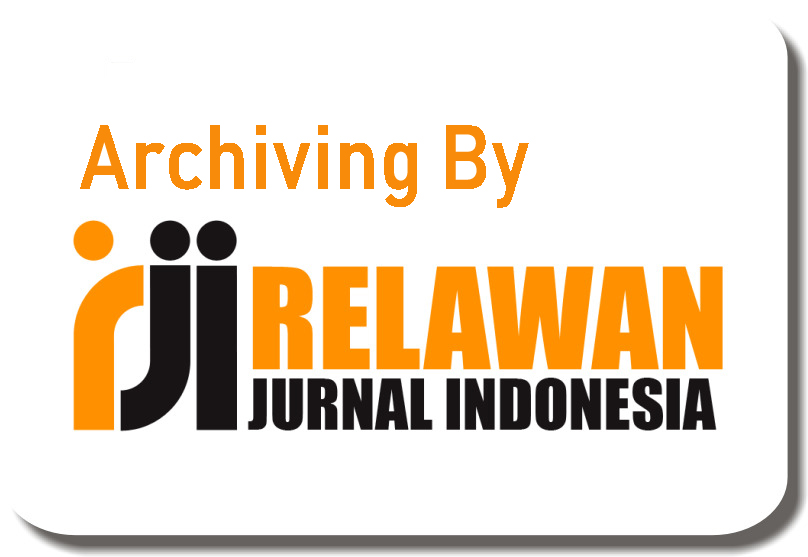Presupposition Analysis in How to Train Your Dragon: Race to the Edge Film
Abstract
This study investigates the types of presupposition found in the animated series How to Train Your Dragon: Race to the Edge, using George Yule’s (1996) classification as a theoretical framework. Understanding presupposition—implied meaning that underlies spoken or written expressions—is essential to developing pragmatic competence in language. Through a descriptive qualitative method, this research identifies and categorizes presuppositional triggers in the film’s dialogues, aiming to reveal how implicit meanings contribute to the narrative and character development. A total of 28 utterances containing presuppositions were analyzed, and all six types identified by Yule were found: existential, factive, lexical, structural, non-factive, and counterfactual. Among these, existential presuppositions were the most frequently occurring, representing 25% of the data. Factive, lexical, and structural presuppositions followed, each comprising 17.8%, while non-factive and counterfactual presuppositions were the least common, each at 10.7%. These results highlight the significant presence of presuppositional meaning in animated film dialogue, indicating that such media can be rich sources for examining pragmatic elements in language use. The findings suggest that presupposition not only enriches character interaction and emotional depth but also supports narrative cohesion. This research emphasizes the pedagogical potential of animated content in teaching pragmatic concepts and encourages further exploration of presupposition across different genres, audiences, and communicative contexts.
Keywords
Full Text:
PDFReferences
Austin, J. (1962). How To Do Things With Words. Oxford Clarendon Press.
Creswell, W. J. (2012). Educational research : planning, conducting, and evaluating quantitative and qualitative research (4th ed.). University of Nebraska.
Ferdinand de Saussure. (2007). Course in General Linguistics Ferdinand de Saussure (Charles Bally and Albert Sechehaye, Ed.). McGraw-Hill Book Company.
Fraenkel, J., Wallen, N., & Hyun, H. (2012). How to Design and Evaluate Research in Education (8th ed.). McGraw-Hill.
Grice, P. (1989). Studies in the Way of Words. Harvard University Press.
Herman and Hasibuan, R. N. (2020). An Analysis of Idiomatic Expressions Found in ‘A Dog’s Journey’ (2019) Movie Script. Udayana Journal of Social Sciences and Humanities (UJoSSH), 4(2), 68-72. doi: https://doi.org/10.24843/UJoSSH.2020.v04.i02.p05.
Humairah, A. (2023). The Analysis Of Presupposition Found In Enola Holmes Movie.
Hutajulu, F. L. S. and Herman. (2019). Analysis of Illocutionary Act in the Movie “You Are My Home” English Subtitle”. Journal of English Educational Study, 2(1), 29-36. DOI: 10.31932/jees.v2i1.371.
Isabella, R., Munthe, E. J. B., Sigalingging, D. J. N., Purba, R., and Herman, H. (2022). Learning How to Be Polite Through a Movie: a Case on Brown and Levinson’s Politeness Strategies. Indonesian EFL Journal, 8(2), 147-154. DOI: 10.25134/ieflj.v8i2.6438
Levinson, S. C. (1983). Pragmatics. Cambridge University Press.
Manurung, R. M., Silalahi, D. E., and Herman. (2020). Presupposition Analysis on Talk Show Hitam Putih. Multidisciplinary European Academic Journal, 2(4), 8-22. Retrieved from https://syniutajournals.com/index.php/MEAJ/article/view/163
Sari, A. (2019). A Pragmatic Analysis of Presupposition In Mata Najwa Talk Show “ Politik Sarung Ma’ruf Amin.” Medan: Umsu.
Searle, J. R. (1979). Expression And Meaning Studies in the Theory of Speech Acts. Cambridge University Press.
Simaremare, Y. N., Nainggolan, W. C., and Herman. (2021). Pragmatics Analysis on Conversational Implicature Used in Mulan (2020) Movie. Middle European Scientific Bulletin, Vol. 15, PP. 64-74. DOI: https://doi.org/10.47494/mesb.2021.15.696.
Sinaga, H., Herman., Purba, C. N., Hutahaean, D. T. (2020). An Analysis of Slang Language Types in "The Duff" Movie". Wiralodra English Journal (WEJ), 4(1), 1-11. DOI: 10.31943/wej.v4i1.69
Situmorang, R. K. and Herman. (2021). An Analysis of Slang Language Styles Used in Charlie’s Angels Movie. Journal of English Educational Study (JEES), 4(1), 21-29. DOI: https://doi.org/10.31932/jees.v4i1.820.
Van Thao, N., Purba, P. M., and Herman. (2021). Pragmatics Analysis on Commisive Speech Act in a Movie. European Journal of Humanities and Educational Advancements, Vo. 2, No. 7. Retrieved from: https://scholarzest.com/index.php/ejhea/article/view/1093
Wahyu Saputra, K., Bahri Arifin, M., & Ariani, S. (2021). An Analysis Of Presupposition On Brad Cohen’s Character in Front of the Class Movie. Ilmu Budaya Jurnal Bahasa,Sastra,Seni,Dan Budaya, 5, 769–777.
Wulandari, R., setyowati, & alamsyah. (2022). Presupposition Analysis In Hotel Transylvania Movie. Ilmu Budaya Jurnal Bahasa, Sastra, Seni, Dan Budaya, 6, 308–319.
Yerry Y. (2015). Presupposition As Found In “The Dark Knight” Movie. Andalas University.
Yule, G. (1996). oxford Introductions to Language Study pragmatics (H.G. Widdowson, Ed.).
DOI: https://doi.org/10.31004/jele.v10i4.1328
Refbacks
- There are currently no refbacks.
Copyright (c) 2025 Tiondina Samosir, Naomi Simanjuntak, Tiodor Sihotang, Tiofanny Elisabet Sirait, Novra Melisa P. Hutabarat

This work is licensed under a Creative Commons Attribution-ShareAlike 4.0 International License.



